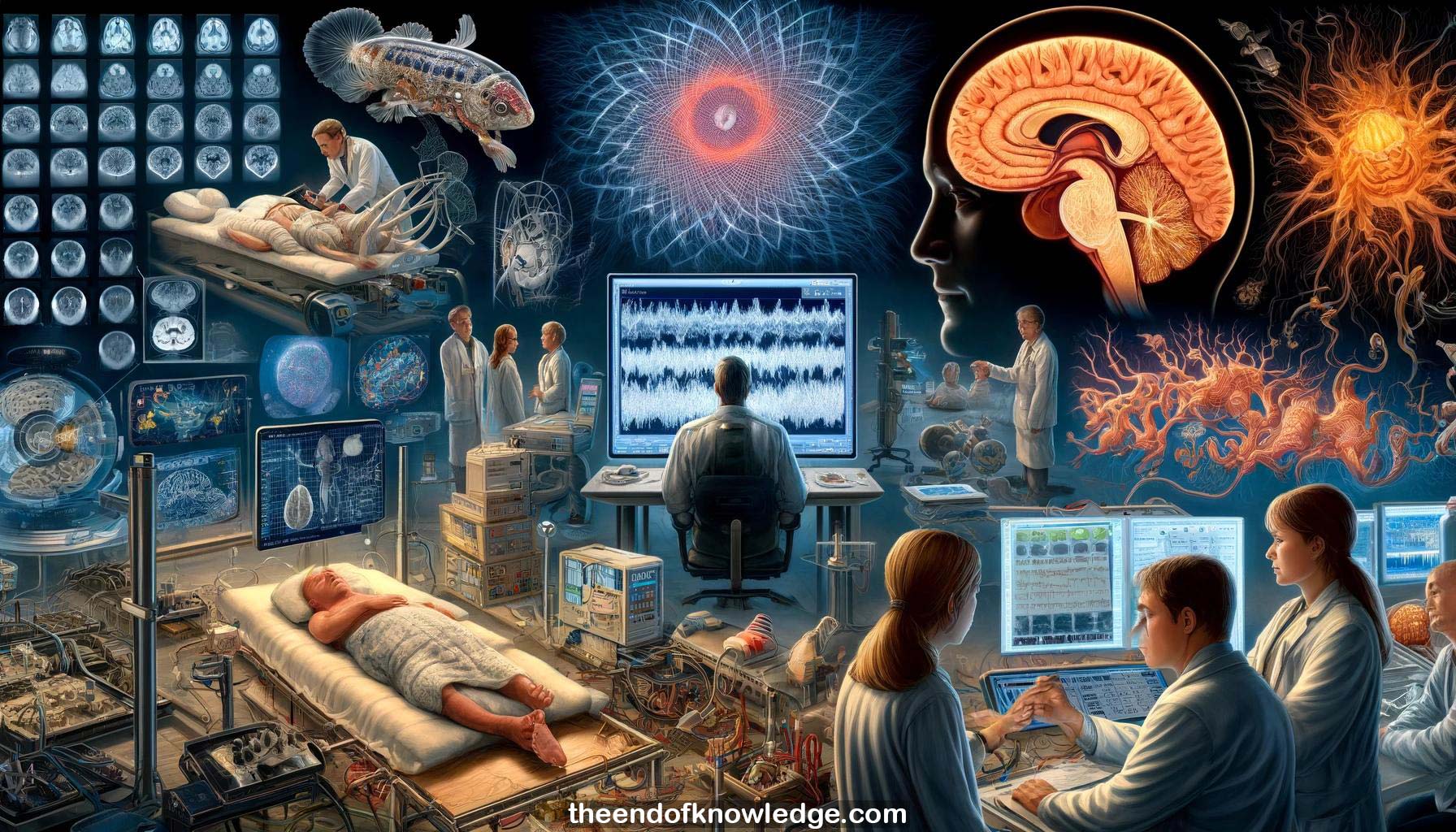 >
>
Concept Graph & Resume using Claude 3 Opus | Chat GPT4 | Llama 3:
Resume:
1.- Damian Cruse returned to Birmingham 9 years ago and is doing experiments with fMRI, EEG and BCI technology.
2.- A video of a larval zebrafish brain shows the complexity of the brain, with humans having 800,000 times more neurons.
3.- It is intractable to truly read someone's mind from the outside due to the brain's enormous complexity.
4.- Patients with severe brain injuries can end up in a vegetative state, appearing wakeful but showing no signs of consciousness.
5.- Determining if an unresponsive patient is conscious has profound implications, as it affects diagnosis, prognosis and life-sustaining therapy decisions.
6.- EEG can potentially help determine if an unresponsive patient is conscious by detecting specific brain activity patterns.
7.- The mu rhythm, an EEG oscillation over sensorimotor regions, is suppressed both when moving and imagining movement.
8.- Mental imagery of movement can be used as a proxy for whether an unresponsive patient is following instructions and conscious.
9.- Some apparently vegetative patients produce normal EEG responses to motor imagery, suggesting they are covertly aware and misdiagnosed.
10.- Motor imagery paradigms are cognitively demanding for many patients and have low sensitivity for detecting consciousness.
11.- Resting state EEG measures like alpha power correlate with prognosis but may reflect brain health more than consciousness per se.
12.- Speech is a powerful stimulus, eliciting a cascade of perceptual and cognitive processes that can induce subjective conscious experiences.
13.- The N400 ERP indexes semantic processing of speech, but can occur in some unconscious states like sleep.
14.- A hierarchical approach looks at cortical responses to sound, speech-specific responses, and semantic context effects in patients.
15.- High-level semantic processing like word categorization can occur during sleep, so N400 effects alone don't prove consciousness.
16.- The brain tracks the rate of phrases and sentences in speech stimuli lacking acoustic cues, reflecting conscious comprehension.
17.- This tracking of linguistic structures breaks down in sleep and when the language is not understood, linking it to consciousness.
18.- Classifiers using sentence-rate tracking can differentiate conscious from unconscious patients above chance, but categories are behaviorally confounded.
19.- The magnitude of a patient's sentence-level response in the acute phase predicts their degree of functional recovery 6 months later.
20.- If an unresponsive patient shows the sentence-tracking response that only occurs in conscious people who understand, they are likely conscious.
21.- BCI communication will likely remain very challenging for DOC patients, but BCI advances can improve diagnostic/prognostic EEG measures.
22.- The N400 ERP is less reliable for single-subject detection with passive listening compared to active, engaging tasks.
23.- Language comprehension impairments in aphasia could cause false negatives on behavioral and EEG-based consciousness tests.
24.- Inter-trial phase coherence of the EEG at the sentence rate is a stronger measure than power for detecting language tracking.
25.- Using personally meaningful, engaging stimuli like a story told by the patient's mother may help elicit stronger EEG markers.
26.- The mu rhythm response allows detecting covert command-following in unresponsive patients who are likely conscious but misdiagnosed.
27.- Cognitive-motor dissociation patients who show EEG command-following tend to have better long-term outcomes than those who don't.
28.- Directly asking too much of DOC patients with BCI is problematic due to cognitive impairment and lack of training.
29.- Measuring the brain's natural responses to speech may be a more feasible way to infer the presence of consciousness.
30.- With further validation, EEG markers of language processing could become valuable clinical tools for diagnosis and prognosis in DOC.
Knowledge Vault built byDavid Vivancos 2024